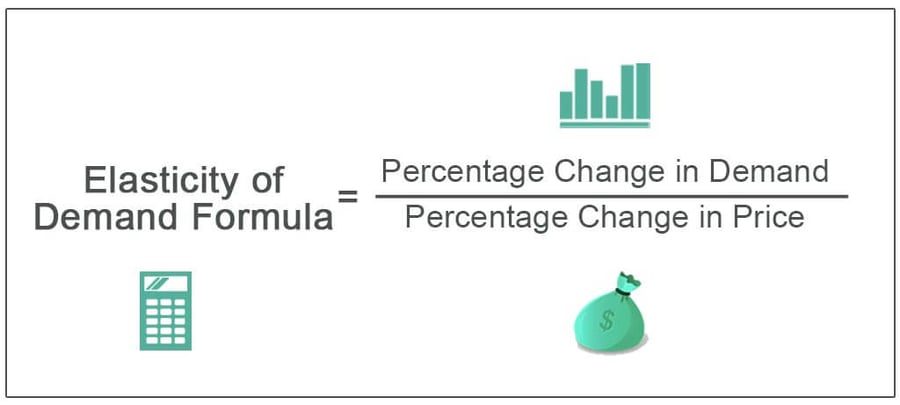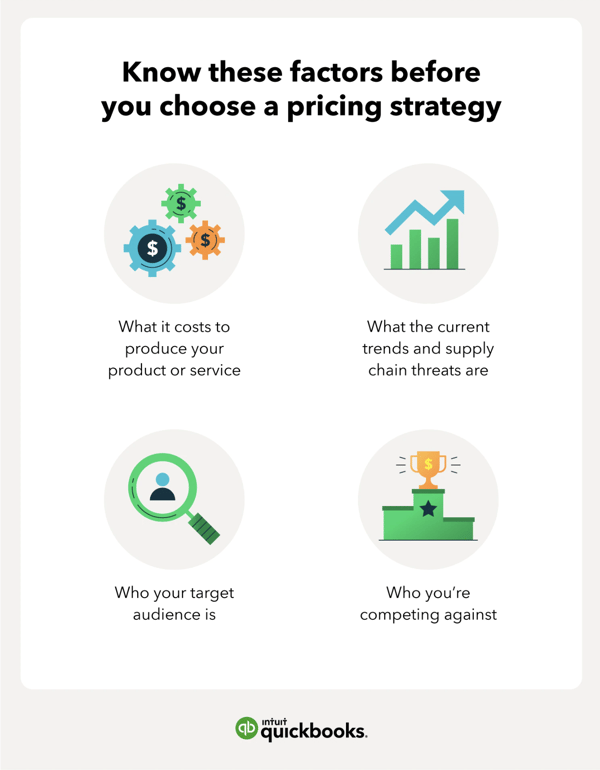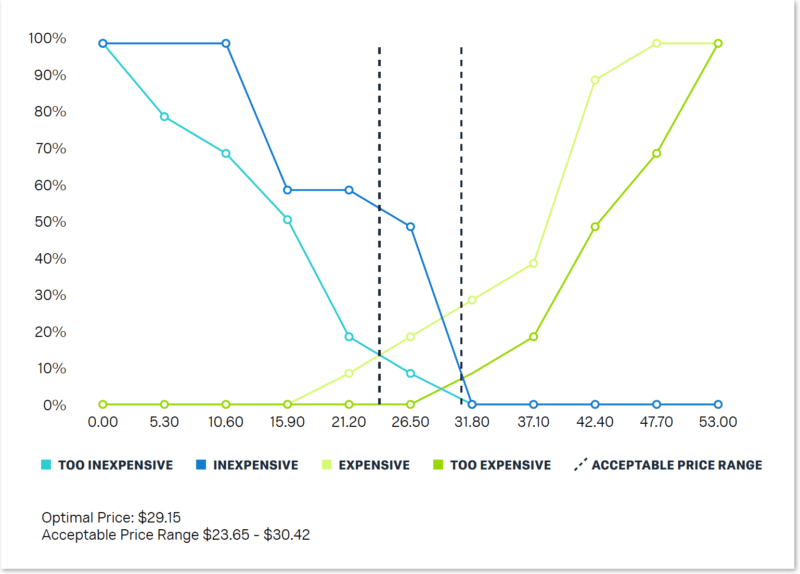
If you’re launching a new eCommerce business or simply introducing a new product line, one challenge remains the same: pricing.
Get it wrong, and your business won’t reach its full profit potential. That could be the case whether you go too high or too low. To get it right, price testing is the way forward. Undertaking valuable price testing helps you understand where your products sit in the current market conditions.
In this article, we’ll explore the best practices and effective methods for conducting price testing. We’ll also highlight five common mistakes that businesses often make with pricing strategies. Of course, you’ll also learn how to avoid them!
Use the information here to refine your pricing strategy, maximize profitability, and stay ahead of the competition in today's dynamic market.
What is Price Testing?
Price testing is a method of determining the ideal price for a product or service.
To achieve this, you conduct controlled experiments to assess consumer responses at different price levels. During price testing processes, you gather data on your customers’ behavior and how other factors affect your potential pricing strategies.
Price testing methods can vary depending on the industry, product type, and target market. Common approaches include A/B testing, conjoint analysis, price sensitivity analysis, and customer surveys. These methods provide insights into how customers perceive value, their willingness to pay at different price levels, and the potential impact on sales volume and revenue.
The ultimate goal of price testing is to set accurate price points that maximize profit without alienating customers. When your business gets pricing right, you can enjoy the balance of achieving company objectives while building a local eCommerce presence.

Source: WallStreetMojo
What is Demand Elasticity?
Before we get going with the right way to conduct price testing methods, we must mention demand elasticity.
Demand elasticity is a measure of how consumer demand changes when the price of a product changes. It tells us how sensitive the quantity demanded is to price changes. Understanding demand elasticity is crucial for price testing and ultimate price-related decisions.
You can calculate demand elasticity by dividing the percentage change in quantity demanded by the percentage change in price.
There are three types of demand elasticity: elastic, inelastic, and unitary.
- Elastic demand means that a slight change in price leads to a significant change in quantity demanded.
- Inelastic demand means that a price change has a minor effect on the quantity demanded.
- Unitary elasticity occurs when the demand is equally responsive to price changes, resulting in a proportional relationship between price and quantity demanded.
For example, if demand is elastic, you may need to consider lower prices to stimulate demand and capture market share. On the other hand, if demand is inelastic, you have more flexibility to adjust prices without significantly impacting demand.
Using a Price Testing Framework
A price testing framework gives your business a structured approach to conducting price experiments and analyzing the results.
Here is a general framework you can adapt and customize based on your business needs:
1. Define the Objectives
The first step is to clearly articulate your price testing initiative's goals.
Are you aiming to maximize revenue, increase market share, optimize profitability, or achieve another specific outcome?
2. Identify Test Variables
Determine the key variables that will be tested. Identify price points, pricing models, packaging options, or current eCommerce discount strategies. The variables must be relevant to the objectives and align with your business strategy.

Source: QuickBooks
3. Design the Experiment
Decide on the experimental design — this includes selecting the target market or customer segments, sample size, and test duration. Consider factors like seasonality, market conditions, and the competitive landscape when designing the experiment.
4. Execute Tests
Implement the price tests by assigning different price points to the various groups or segments you’ve identified in the last step. This could involve running A/B tests, offering different price options to customer segments, or implementing randomized pricing experiments.
5. Data Collection
Collect data on key metrics like sales volume, revenue, customer behavior, and market response during the testing period. Use appropriate data collection methods, such as transaction records, customer surveys, website analytics, or other relevant sources.
Consider leveraging mobile app test tools to ensure the functionality of your mobile applications in price testing. Reliable mobile app test tools can help ensure accurate data collection, a smooth user experience, and the overall effectiveness of the price testing process.
6. Analyze Results
Analyze your data to evaluate the impact of different price points on the set objectives. Statistical analysis techniques will help you to identify data patterns and trends. Compare the performance of different test groups or segments to understand the effectiveness of each pricing strategy.
7. Iterate and Refine
Based on your results, refine your pricing strategy and iterate on the tested variables. Go ahead and implement the revised pricing approach, and then monitor the results continuously.
The 5 Most Common Price Testing Methods
Now that you understand the framework used for price testing, we can dive into the different methods that you can use to test your pricing strategy.
A/B Testing
This method involves randomly dividing customers into two or more groups and assigning different prices to each group. By comparing the performance of different price points, you can quickly evaluate the impact on conversion rates, sales volume, and revenue.
Dynamic Pricing and Market Testing
Dynamic pricing involves adjusting prices in real time based on factors like demand, competition, and market conditions. Market testing involves new product releases or services with different price points in specific markets. The goal is to observe customer responses and evaluate the viability of different pricing strategies.

Source: Economicshelp
Conjoint Analysis
Conjoint analysis is a statistical method that helps us to understand how customers view and value various product features and prices.
This type of analysis involves presenting customers with different product scenarios and asking them to make choices or give ratings. By analyzing their responses, you can determine which features are most important to customers — and how price influences their decisions.
This price testing method helps identify the relative importance of price in your target market’s purchasing decisions and determine the ideal price point based on your customers’ preferences.
Van Westendorp Price Sensitivity Meter
The Van Westendorp method involves surveying customers and asking them about price acceptability. Based on their responses, you can identify a pricing range to include the upper and lower price points customers find too expensive or too cheap.
Customer Surveys and Feedback
Gathering direct feedback from customers through surveys, interviews, or focus groups can provide insights into their price preferences, perceived value, and willingness to pay. This qualitative data helps inform pricing decisions and explain customer perspectives.
Another thing to think about when considering various price testing methods is automation. While not all methods suit automation, certain aspects can benefit from automation testing techniques. For example, you can set up and run automated A/B tests. Automation tools can also help manage test groups, track conversions, and systematically analyze the results.
How to Avoid Common Price Testing Mistakes
Before you initiate price testing using the framework and methods we've discussed, take note of the most common mistakes that businesses make when testing their prices.
Mistake 1: Insufficient Sample Size
The first common mistake in price testing is using a small sample size that does not accurately represent your target market. A small sample size can lead to unreliable results. It’s essential to ensure an adequate sample size that provides statistical significance and represents the diverse characteristics of your customer base.
How to Avoid This Mistake:
To avoid this mistake, ensure that your sample size is statistically significant and representative of your target market. Conduct a power analysis to determine the appropriate sample size needed for reliable results. Consider factors such as confidence level, desired effect size, and expected variability. Increasing the sample size will reduce the margin of error and provide more reliable insights.
Mistake 2: Ignoring Competitive Factors
Pricing decisions should not be made in isolation. Instead, account for competitor pricing strategies, market positioning, and customer perceptions of value. Ignoring these factors can result in unrealistic pricing that may negatively impact sales and market share.
How to Avoid This Mistake:
Conduct thorough competitor analysis to understand their pricing strategies, positioning, and value propositions. Incorporate this information into your price testing process to assess how your pricing compares and to identify opportunities for differentiation.
Mistake 3: Neglecting Customer Value Perceptions
Price testing should include customer perception of value. Customers consider product quality, brand reputation, and overall experience. Ignoring customer preferences and focusing solely on price can lead to suboptimal pricing decisions that do not align with customer expectations.
How to Avoid This Mistake:
Integrate customer feedback and preferences into your price testing process. Conduct customer surveys, interviews, or focus groups to understand value perceptions and willingness to pay.
Consider factors influencing value perception, such as product quality, customer service, brand reputation, and unique selling points. Creating your target consumer profile can help significantly with this stage. Align your pricing with the perceived value to ensure it resonates with your target customers.
Mistake 4: Limited Price Point Testing
It's essential to experiment with various price levels to understand the price elasticity of demand and identify the optimal price point (the one that maximizes revenue or achieves other objectives). Testing only a narrow range of prices may overlook potential opportunities for pricing optimization.
How to Avoid This Mistake:
Be open to testing various price points to explore different pricing scenarios. Test both higher and lower price levels than your current price to understand the price elasticity of demand. This will help you to uncover potential opportunities to optimize your revenue.

Source: Qualtrics
Mistake 5: Overlooking Long-Term Effects
Price testing should not focus solely on short-term outcomes.
It's crucial to consider the long-term effects of pricing decisions on customer loyalty, brand perception, and profitability. Setting prices too low to drive immediate sales may result in unsustainable margins or undervaluing your offerings. On the other hand, setting prices too high can lead to customer attrition or missed market opportunities.
How to Avoid This Mistake:
Take a holistic view of pricing decisions and consider their long-term implications. Analyze the potential impact of pricing decisions on customer retention, lifetime value, and overall profitability. Conduct scenario analysis and consider factors like market growth, customer loyalty, and competitive response. To balance short-term objectives and long-term sustainability, set prices that capture customer value while maintaining healthy profit margins.
Key Takeaways
- Price testing is a valuable tool to determine the ideal price for a product — the process can maximize profit without losing customers.
- Demand elasticity measures how product consumption changes in relation to a price change. Understanding it helps in setting prices that satisfy consumer expectations and business goals.
- When conducting an A/B price test, it's important to test different products within the same category. Determining the price points to test, and choosing the winner based on revenue, not conversions.
- Surveys are a robust option for price testing. They allow for precise results (without running the risk of upsetting customers).
- Price testing should be an ongoing process to adapt to evolving market conditions and customer preferences.
Conducting price testing methods correctly is a valuable skill to help make informed pricing decisions. Getting this aspect of your eCommerce business right can significantly optimize your revenue and profitability.





Leave a reply or comment below